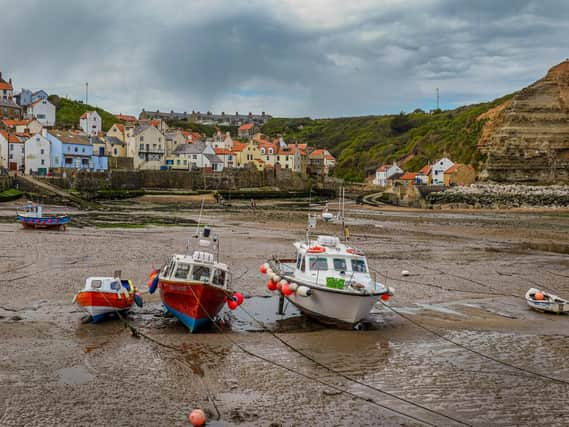Picture Post: Staithes sailboats settled on the shores of North Yorkshire fishing village


It’s as quaint as it comes - boats settled on the shores of sleepy Staithes.
The old village near Whitby in North Yorkshire has long been a popular attraction.
Advertisement
Hide AdAdvertisement
Hide AdBut its profile can only have grown since its inclusion in Hollywood director Paul Thomas Anderson’s 2017 film Phantom Thread, starring Daniel Day-Lewis, and more recently in last year’s Christmas special of Mortimer and Whitehouse: Gone Fishing.
The special spot boasts a number of B&Bs and fisherman cottages.
Visitors can even stay in the former police station, which was built in the 1920s and is now known as the Peeler’s Rest cottage.
Advertisement
Hide AdAdvertisement
Hide AdThe picturesque destination was included in its list of the top 20 most beautiful seaside villages in the country.
The outlet cited Staithes’ links to Captain Cook - who was a grocer’s apprentice in the village before moving to Whitby and going to sea - its artistic pedigree and thriving local seafood scene as reasons for its inclusion in the list.
Staithes was once home to 80 fishing boats, although the fleet has now dwindled to a few part-time vessels. Fishermen historically used small boats called cobles.
Some traditions are still going strong in the village - there is still active participation in the fishermen’s choir, for example.
Advertisement
Hide AdAdvertisement
Hide AdAnother aspect of its history is the ‘Staithes bonnet’ - worn by fisherwives for centuries to protect their heads and necks from rain as they carried the wooden boxes filled with freshly caught fish.
The village has also become known as an artists’ colony after a group of around 30 resident painters known sometimes as the Northern Impressionists put the area on the map in 19th-century.
The Cleveland Way is also accessible and nearby is Skinningrove, which has the remnants of the alum mines which once made the village famous.
Tech